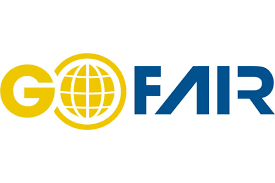FAIR Principles
In 2016, the ‘FAIR Guiding Principles for scientific data management and stewardship’ were published in Scientific Data. The authors intended to provide guidelines to improve the findability, accessibility, interoperability, and reuse of digital assets. The principles emphasise machine-actionability (i.e., the capacity of computational systems to find, access, interoperate, and reuse data with none or minimal human intervention) because humans increasingly rely on computational support to deal with data as a result of the increase in volume, complexity, and creation speed of data.
Findable
The first step in (re)using data is to find them. Metadata and data should be easy to find for both humans and computers. Machine-readable metadata are essential for automatic discovery of datasets and services, so this is an essential component of the FAIRification process.
F1. (Meta)data are assigned a globally unique and persistent identifier
F2. Data are described with rich metadata
F3. Metadata clearly and explicitly include the identifier of the data they describe
F4. (Meta)data are registered or indexed in a searchable resource
Accessible
Once the user finds the required data, she/he needs to know how can they be accessed, possibly including authentication and authorisation.
A1. (Meta)data are retrievable by their identifier using a standardised communications protocol
A1.1 The protocol is open, free, and universally implementable
A1.2 The protocol allows for an authentication and authorisation procedure, where necessary
A2. Metadata are accessible, even when the data are no longer available
Interoperable
The data usually need to be integrated with other data. In addition, the data need to interoperate with applications or workflows for analysis, storage, and processing.
I1. (Meta)data use a formal, accessible, shared, and broadly applicable language for knowledge representation.
I2. (Meta)data use vocabularies that follow FAIR principles
I3. (Meta)data include qualified references to other (meta)data
Reusable
The ultimate goal of FAIR is to optimise the reuse of data. To achieve this, metadata and data should be well-described so that they can be replicated and/or combined in different settings.
R1. Meta(data) are richly described with a plurality of accurate and relevant attributes
R1.1. (Meta)data are released with a clear and accessible data usage license
R1.2. (Meta)data are associated with detailed provenance
R1.3. (Meta)data meet domain-relevant community standards
The principles refer to three types of entities: data (or any digital object), metadata (information about that digital object), and infrastructure. For instance, principle F4 defines that both metadata and data are registered or indexed in a searchable resource (the infrastructure component).






